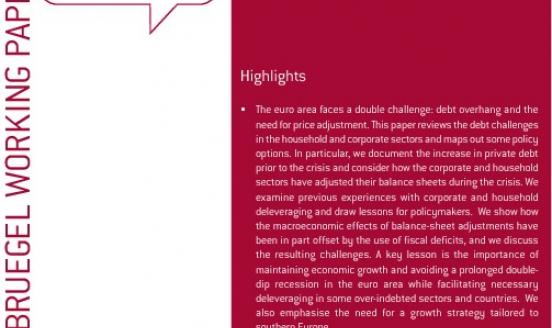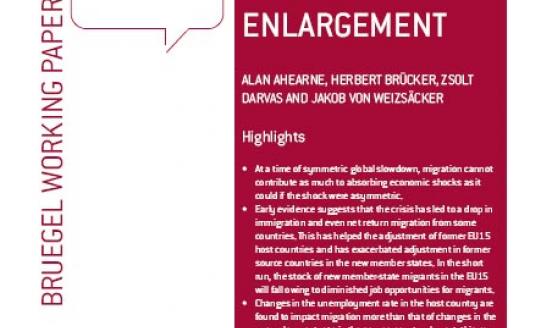We are on our own if the bubble bursts
Will Irish house prices crash? And if they do, what should Irish policy makers do about it? A good place to start looking for answers to these questions is
the foreign experience. House price booms and busts are surprisingly common in industrial countries.
In a new study of house prices that I wrote with several of my former colleagues at the U.S. Federal Reserve, we identify no fewer that 44 episodes of house price booms and busts in industrial countries since 1970. Given the eye-popping gains in house prices in Ireland over the past decade, the foreign experience is particularly relevant. On balance, the lessons from the study are quite sobering, and underscore the difficulty of the task that will face policy makers in Ireland in the event of a significant downturn in Irish house prices.
The difficulty arises in part because it is not clear what policy makers in Ireland should do, if anything, to respond to so-called asymmetric shocks--that is, shocks that affect Ireland but do not affect other members of the euro-area, or shocks that produce different effects on the Irish economy than on other euro-area economies. A crash in Irish house prices is an example of such a shock. What’s more, the chances of a house price bust may be greater than many people think.
Consider the ratio of house prices to rents, which has been shown to provide a useful benchmark for valuing housing in other countries. The price-rent ratio in Ireland has soared over recent years and at 29 now stands roughly 2½ times above its level in 1996. Irish house prices have surged 300 percent over the past decade, while increases in rents have been relatively muted. Price-rent ratios at these levels raise legitimate concerns about the sustainability of Irish house prices.
The Fed study shows that certain financial conditions, such as low interest rates and financial deregulation, are usually factors in past house price surges, though other features such as demographics and buoyant income growth also help explain these booms.
Typically, house prices peak not long after central banks begin raising interest rates in response to emerging inflation pressures. Subsequently, house prices fall for about five years, on average, and their previous gains are largely reversed. In other words, the larger the boom, the greater the bust! Not surprisingly, the downward correction in house prices is usually accompanied by an economic downturn, rising unemployment, and deteriorating fiscal balances.
Interestingly, the latest rise in house prices in industrial countries has been the most dramatic on record. House prices in recent years have risen at a rapid pace not just in Ireland, but in Australia, Spain, the United Kingdom, and the United States. If the current episodes follow the typical patterns seen in the past, house prices will eventually slow in these countries, and some of these countries could endure a period of flat or even falling prices in the future.
Central bankers don’t agree on how best to respond to booms in house prices. The Fed’s Alan Greenspan prefers a hands-off approach, arguing that central banks do not have weapons in their arsenals that can burst bubbles without doing undue harm to the wider economy. Other central bankers, such as the Bank of England’s Mervyn King, appear more willing to tighten monetary policy to try to stem current and future surges in house prices.
When house price booms turn into busts, however, there seems to be no disagreement on how to respond. The evidence shows that in the aftermath of house price peaks, when house prices are falling, central banks cut interest rates quickly and sharply.
Importantly, the aim of the interest rate cuts is not to reverse the declines in house prices per se--as mentioned earlier, following a pronounced run-up, prices tend to fall a long way. Rather, the goal is to cushion both economic activity and the financial system from the effect of the house price crash. Lower interest rates deliver a shot in the arm for debt-laden households and businesses and help offset the drag on the economy from declines in house building, employment in the construction industry, and household sentiment. Moreover, lower interest rates and downward revisions to expectations for future economic growth cause the country’s currency to depreciate on foreign exchange markets, which helps boost exports. This channel is especially important for small open economies. For example, following the bursting of real estate bubbles in the Scandinavian countries in the late 1980s, improvements in competitiveness as a result of currency depreciation appears to have been an important element in eventually bringing about recoveries in these economies.
The evidence also shows that the recession that follows a crash in house prices usually lasts about a year. The economy then starts to recover as the supporting effects of looser monetary policy kicks in, though it can take up to five years for economic growth to return to it pre-peak pace. In sum, in the face of an adverse shock to the property market, the trick seems to be to let prices--interest rates, exchange rates, and house prices-- do the downward adjusting, so that quantities--output and employment--don’t have to.
What can we infer from all this about the Irish economy’s capacity to withstand a bust in house price? The answer seems to be that Ireland is rather vulnerable. One implication of Ireland’s having adopted the euro as our currency is that interest rates here no longer respond to domestic economic conditions. Euro-area interest rates are set by the European Central Bank, and the ECB cares only about the euro area as a whole, not about individual member countries. As Ireland accounts for only a negligible part of euro-area activity and inflation, the ECB pays little attention to us. Similarly, the foreign exchange value of the euro is not affected by developments in Ireland. So if Irish house prices crash, we can’t respond in the traditional manner by cutting interest rates and letting our currency depreciate. Monetary policy didn’t tighten during the boom, and won’t loosen during the bust, so other prices will have to do the heavy lifting if we are to avoid an especially nasty outcome. Moreover, increases in construction of houses have been a key contributor to overall growth in the Irish economy of late.
In fact, one can imagine a scenario in which global interest rates spike up from historically low levels at present, bursting housing bubbles in countries that have experienced sharp run-ups over recent years. The Bank of England and the Fed respond in the usual way by slashing interest rates, and sterling and the dollar would both plunge. But falling house prices in Ireland (and perhaps in Spain) would not elicit a response from the ECB. Ireland would then face a perfect storm of falling house prices, rising interest rates and debtservicing costs, and the euro appreciating against the currencies of our two largest trading partners, the United Kingdom and the United States.
The best strategy would obviously be to make sure that a bubble doesn’t inflate here and that households don’t take on more debt then they can handle, though some observers might claim that the authorities are behind the curve in both these respects. In the event that Irish house prices do turn down, economic flexibility will be crucial in containing any fallout.
In this regard, some lessons can be drawn from Hong Kong’s experience in the late 1990s. Hong Kong’s currency board arrangement means that the authorities there have essentially no control over domestic interest rates or the exchange rate. When property prices collapsed in 1997/1998, it was sustained declines in nominal wages that eventually restored the economy’s competitiveness. But declines in nominal wages are rarely seen in industrial countries and are usually vigorously opposed by trade unions. Whether the wage-formation process in Ireland is up to the task of rebalancing the Irish economy in the aftermath of a property crash is very much an open question. Tax cuts and increases in government spending would also help to revive the economy following a house price bust, though the effectiveness of such measures is blunted by the openness of the Irish economy.
One thing is for sure: If house prices crash here, the much-vaunted flexibility of the Irish economy and the innovativeness of Irish policy makers will be
sorely tested.

